1826-1844 Lord Lonsdale
Lord Lonsdale, 1st Earl of Lonsdale, William Lowther, took charge of Links Farm in 1826 and established a Stud Farm, having relocated from Oxcroft, Cambridgeshire. He installed Mr Robinson as his manager in 1826, and Robinson continued in that role until 1837. The two main stallions at the Stud were Partisan, who Lonsdale purchased from the Duke of Grafton, and Tiresias, the 1819 Epsom Derby winner, who Lonsdale purchased from the Duke of Portland, although Tiresias proved to be disappointing as a stallion.
1845-1857 Mr Charles Holmes
After Lord Lonsdale’s death on 19th March 1844 Links Farm was leased by Charles Holmes and his wife Mary. Mary died at the Farm on 21st September 1857 aged 70.
1858-1885 Mr Samuel Gardner
When Holmes left the Farm it was then owned by Mr Samuel Gardner who farmed the majority of the land, but in 1885 he leased some land to Robert Sherwood.
For over 4 centuries racing has been staged in Newmarket, but how have the racecourses evolved from an initial starting point at Fleam Dyke Pumping Station, some 8 miles from the town, with a winning post barely 200 metres from the town centre, into two world recognized, excellent racecourses and a universal acceptance that Newmarket is the Headquarters of racing?
To access an interactive racecourse map showing over 50 individually named racecourses CLICK HERE. The map will enable you to:-
1. Determine when extended races over 8 miles, 6 miles and 4 miles began to be replaced by the courses now visited by thousands annually;
2. Consider how the challenge of crossing the Devil's Dyke was overcome;
3. Contemplate why the town no longer has a steeplechase course despite having at least 5 courses during the past 2 centuries;
4. Examine the practicalities of having up to 48 starting posts and winning posts;
5. Appreciate that it was not financially viable to have an open racecourse spread widely across the heath, with a finishing post barely 200 metres from the town centre;
6. Research how and why the Cambridgeshire Handicap has been contested over 3 different courses.
NOTE: The map does not make mention of 2 particular courses:-
(i) Sefton Course (also known as the Cambridge Road Course)
Source: 1970 Raceform.Used from 1959 to 1975.
(ii) New Circular Course
The Circular Handicap was run on Friday 29th October 1875 on the New Circular Course of about two miles.
Source: London Standard (30th October 1875): ''the horses started near the Turn of the Lands, ran back way of the Cambridgeshire Course towards the Ditch, and afterwards proceeded down the side of the Tan Gallop, and turned into the Rowley Mile near the Bretby Stakes starting post, finishing at the stand at the end of the flat. Except in the hollow near the Cambridgeshire start the runners should have been visible all the way if the sky had been bright and clear''.
Another report hoped that the Circular Handicap would become a feature in future programmes, as it would be contested in front of the new grandstand which would be completed in about a year and would be able to accommodate thousands.
(I am grateful to Tim Cox for bringing attention to these 2 courses.)
Enjoy researching the intriguing history of Newmarket and its many racecourses.
1885-1890 Robert Sherwood
In 1885 Robert Sherwood was a prominent, successful trainer based at St Gatien, and it was Sherwood who established a hurdle and steeplechase track on Links Farm, primarily to enable him to school his jumpers. However, he also saw it as a business proposition, allowing other Newmarket trainers to gallop their horses over the track for a fee. In 1887 Joe Cannon tested his hurdlers over several flights at Links Farm, while C W Golding and James Ryan galloped their jumpers over the trial hurdles. On Wednesday 9th January 1888 the Hon George Lambton rode Bellona in a gallop with Cormeile and Muscovite over the 2-mile steeplechase track.
Colonel Harry Leslie Blundell McCalmont, son of Hugh Barklie Blundell McCalmont, born on 30th May 1861, was educated at Eton College before joining the 6th Regiment of Foot in 1881, and the Scots Guards in 1885. In addition to becoming an Army Officer, he was later a Conservative MP and prominent racehorse owner.
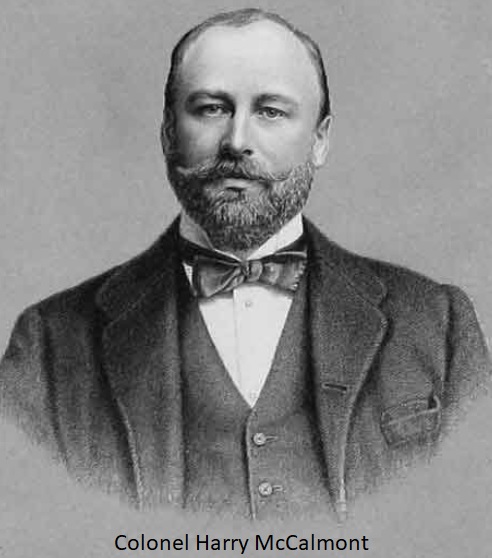
Three years after joining the Scots Guards Harry inherited a fortune from his wealthy uncle, Hugh McCalmont, but under the terms of the will Harry could only call on £2000 per annum for the first 7 years after inheriting, but by 1895 he had access to the vast fortune. By then Harry had purchased the Cheveley Park Estate from the Dukes of Rutland, whose ancestors had themselves purchased the Estate from the Dukes of Somerset. During the 5th Duke of Rutland's ownership of Cheveley Park he bred 4 Classic winners on the Estate, and had planted a tree lined avenue which he called Duchess Drive in honour of his wife, Lady Elizabeth Howard, who he married in 1799, but who tragically died on 29th November 1825 aged just 45. Those 4 Classic winners were Sorcery (SR 1937), the 1811 Epsom Oaks winner; Medora (SR 1875) the 1814 Oaks winner; Rhoda (SR 1875) the 1816 1000 Guineas winner; and the best of them, Cadland (SR 2016) the 1828 Epsom Derby and 2000 Guineas winner. Harry completed the purchase of the 7800 acre Cheveley Park Estate in 1892, and a Stud Farm and various Newmarket racing stables, establishing a steeplechase course on Cheveley Park. A year later he recorded his greatest success when Isinglass completed the Triple Crown. In 1898 he built a large mansion on Cheveley Park, but by then he had abandoned the Cheveley Park steeplechase course, where he felt the trees on the Estate restricted his view of racing, and opted instead to build Newmarket’s Steeplechase course on Links Farm. The last meeting on the Cheveley Park course took place in 1893, while the first meeting on the Links Farm steeplechase course was staged on Thursday 29th November 1894. Meetings billed as 'Newmarket Hunt races' had been held up to the 1860s on a course at Moulton, and were revived in March 1879 at a course 5 miles from Newmarket and a mile and a half from Kennet Station, but now the re-revival in 1894 was held in Newmarket. By 1895 it had extended to a 2-day meeting and included the Newmarket Grand Military Chase which was later won by Greenhill for Mr Withington in 1897. At that same meeting the Cheveley Cup saw The Rush land prohibitive odds of 1/5 to defeat Sophos and Xylophone. The National Hunt Chase Challenge Cup, over 4 miles and 24 fences, is now contested at the annual Cheltenham Festival in March, but in 1897 it was held at Newmarket, resulting in a win for Nord Quest ridden by Jules Morand. Colonel McCalmont was caught up in War duties from 1899 to 1901 and the meeting did not take place during these years. More bad fortune occurred in 1902 when the weather caused the meeting to be cancelled. The Colonel died in December 1902, and with him the chance of permanent steeplechasing ever becoming firmly established at Newmarket. The final meeting took place on Thursday 28th December 1905.
1893 2000 Guineas at Newmarket ISINGLASS (SR 2047) 4/5 fav owned by Harry McCalmont, trained by James Jewitt and ridden by Tommy Loates
1893 Epsom Derby ISINGLASS (SR 2047) 4/9 fav owned by Harry McCalmont, trained by James Jewitt and ridden by Tommy Loates
1893 St Leger at Doncaster ISINGLASS (SR 2047) 40/95 fav owned by Harry McCalmont, trained by James Jewitt and ridden by Tommy Loates
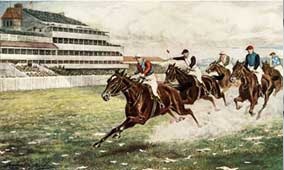
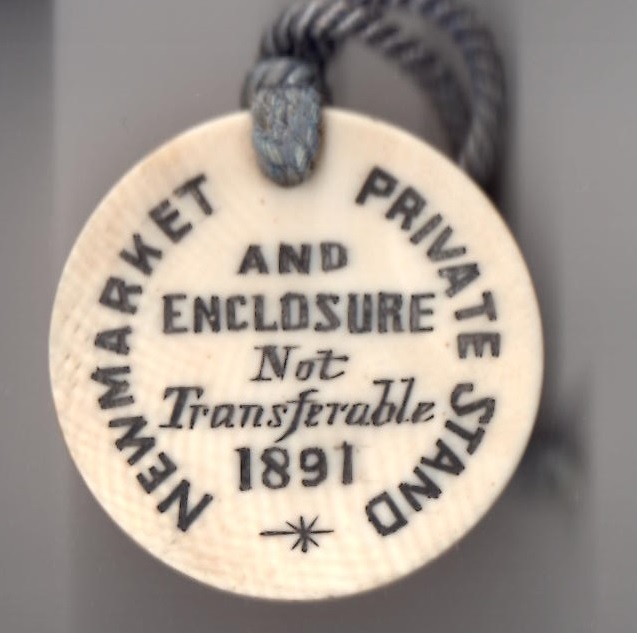
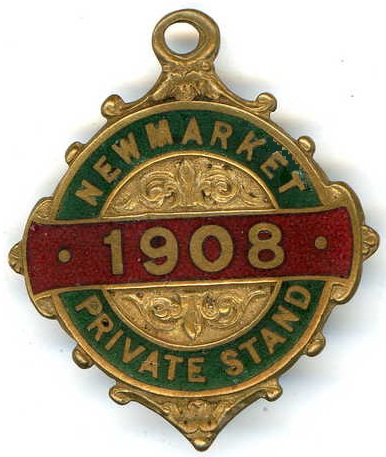
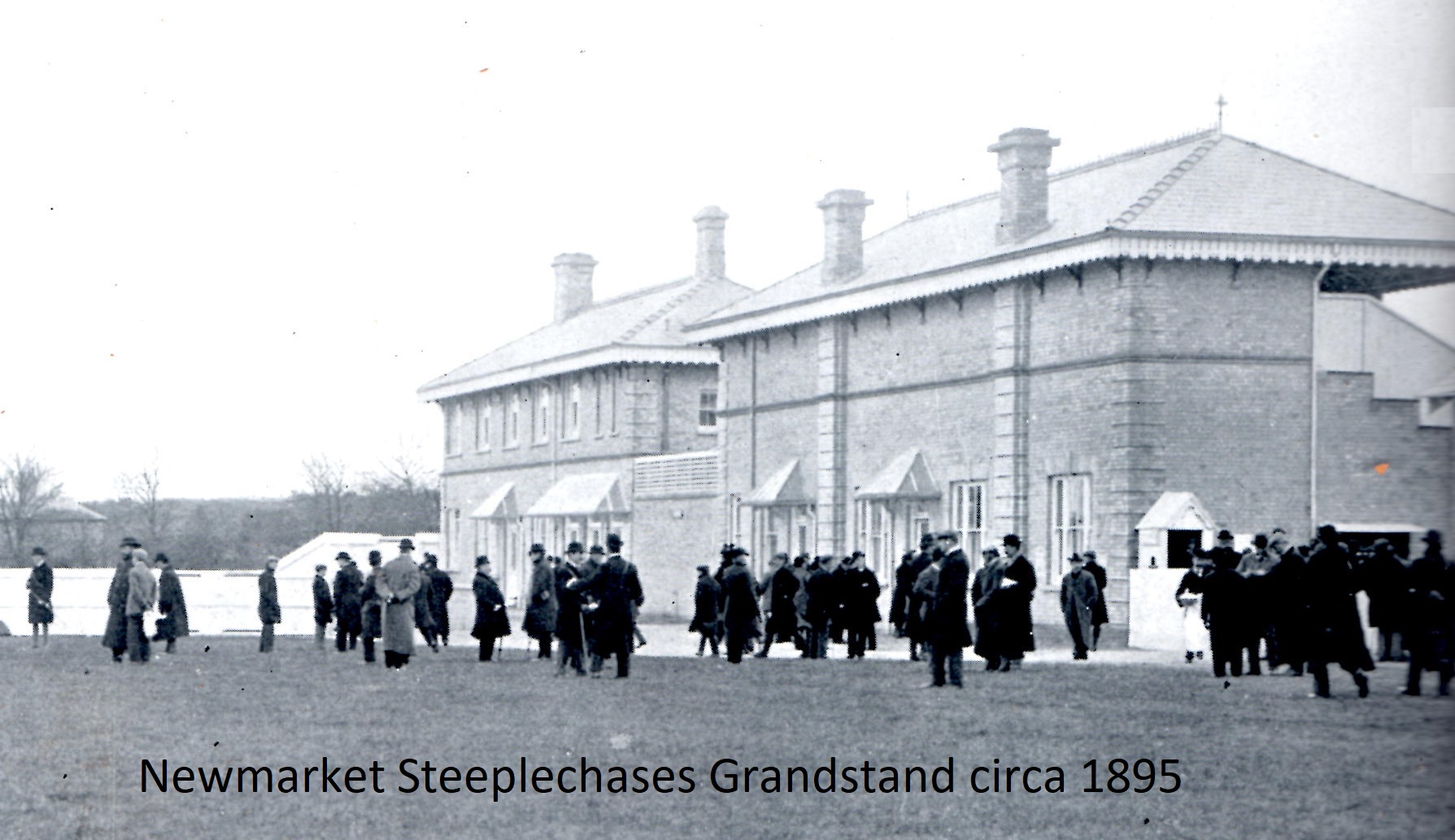
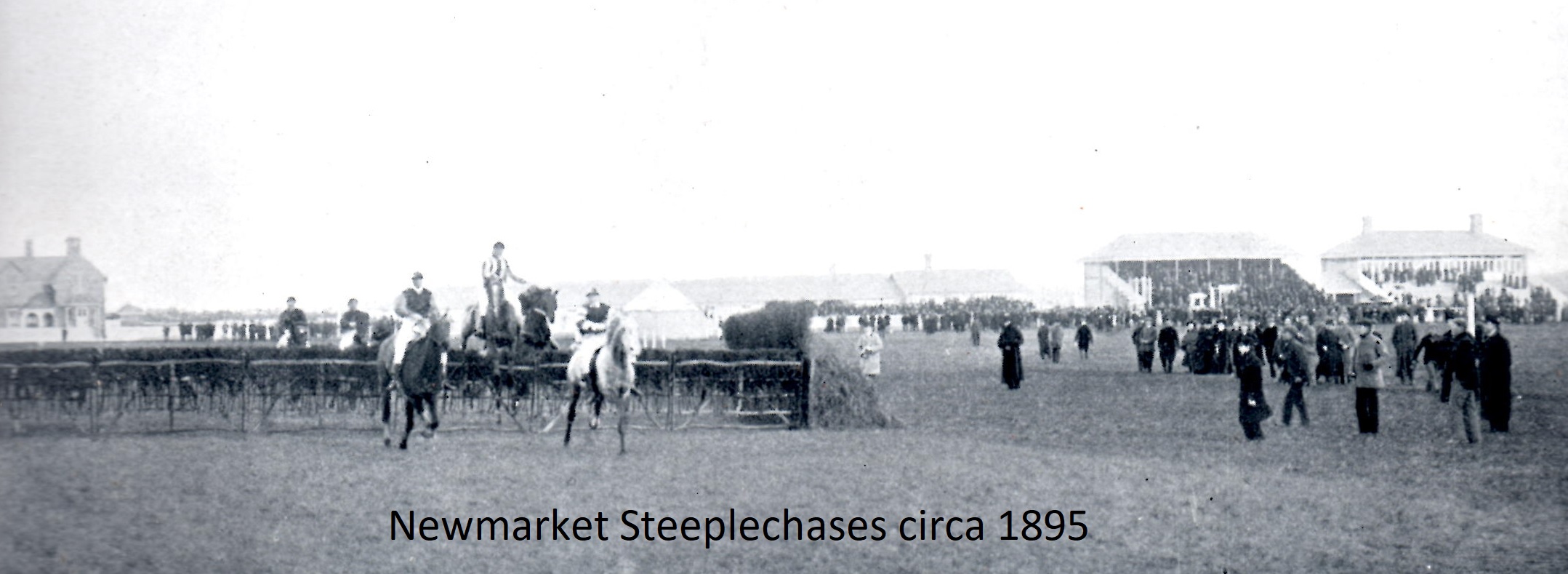
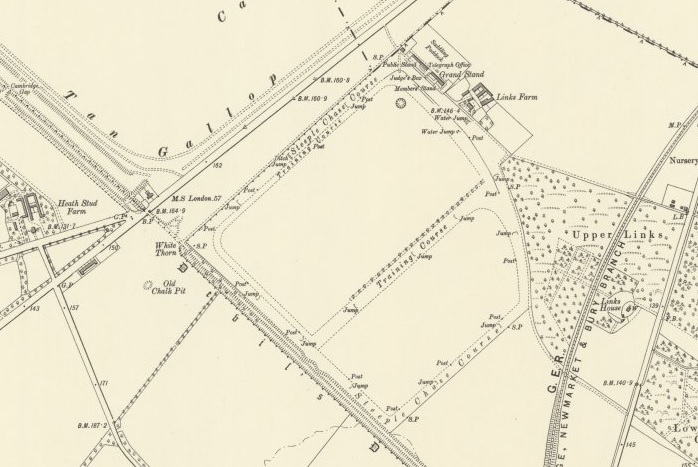
1905-1914 H T Medcalfe
After steeplechase racing ceased on the Links Farm course the stables at Links Farm were used by H T Medcalfe. He was first recorded in the trainers list in May 1905, and by then he was based at Links Farm. By 1906 he was training the likes of Tebworth, Cording, Cimon and Charles Martell, and in 1907 his most prominent owner was Mr William Barnett. However, as War broke out he committed suicide, shooting himself on Wednesday 16th September 1914.
1902-present
In 1902 Newmarket Links Golf Course was laid out. Traditionally, a links course is a seaside course, but the name Links Farm was firstly used for the Farm and then adopted by the Golf Club.



